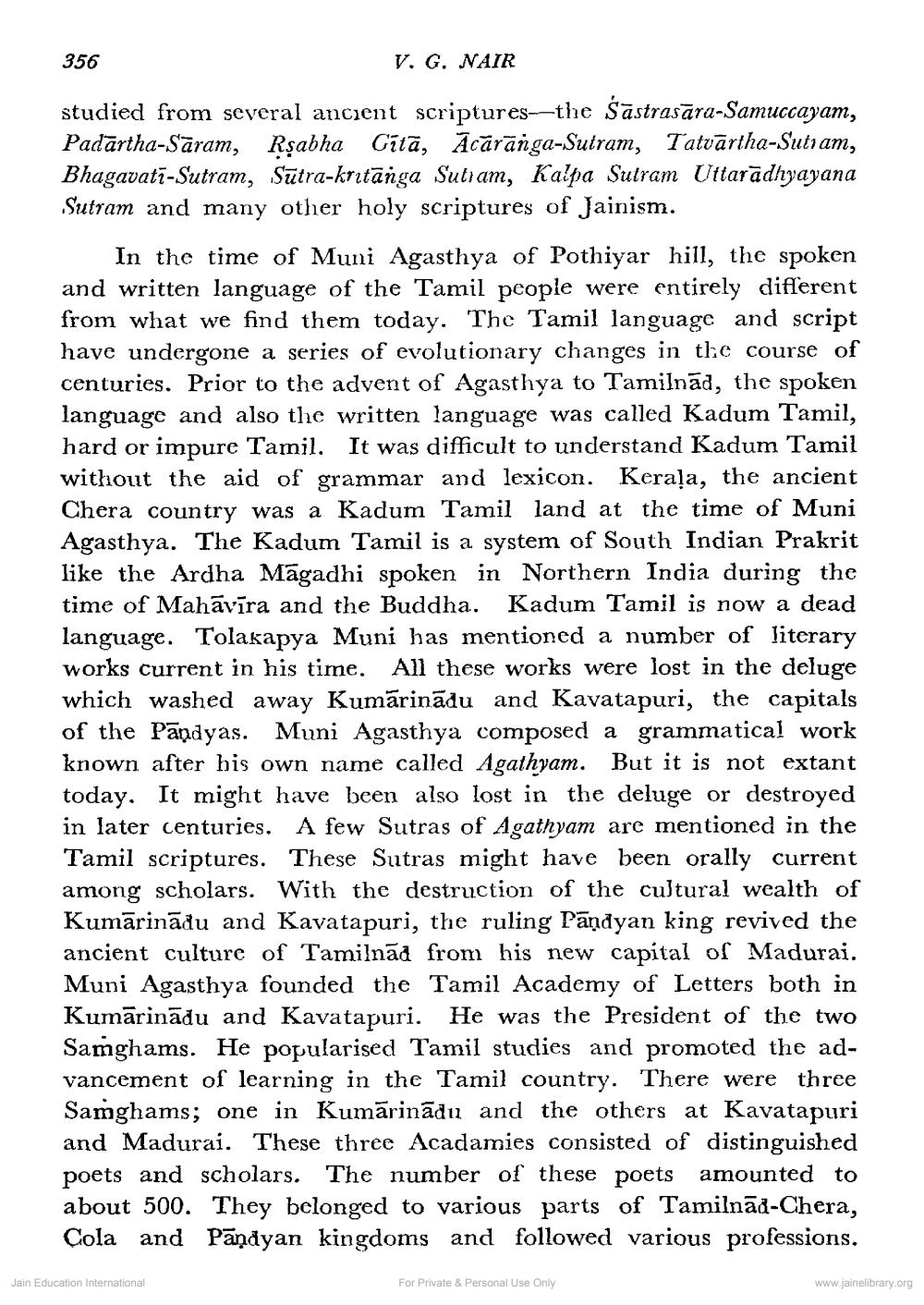________________
356
V. G. NAIR
studied from several ancient scriptures--the Šāstrasāra-Samuccayam, Padārtha-Sāram, Rşabha Gītā, Ācāranga-Sutram, Tatvārtha-Sutram, Bhagavatī-Sutram, Sūtra-kritānga Sutiam, Kalpa Sutram Uttarādhyayana Sutram and many other holy scriptures of Jainism.
In the time of Muni Agasthya of Pothiyar hill, the spoken and written language of the Tamil people were entirely different from what we find them today. The Tamil language and script have undergone a series of evolutionary changes in the course of centuries. Prior to the advent of Agasthya to Tamilnād, the spoken language and also the written language was called Kadum Tamil, hard or impure Tamil. It was difficult to understand Kadum Tamil without the aid of grammar and lexicon. Kerala, the ancient Chera country was a Kadum Tamil land at the time of Muni Agasthya. The Kadum Tamil is a system of South Indian Prakrit like the Ardha Māgadhi spoken in Northern India during the time of Mahāvīra and the Buddha. Kadum Tamil is now a dead language. Tolakapya Muni has mentioned a number of literary works current in his time. All these works were lost in the deluge which washed away Kumārinādu and Kavatapuri, the capitals of the Pandyas. Muni Agasthya composed a grammatical work known after his own name called Agathyam. But it is not extant today. It might have been also lost in the deluge or destroyed in later centuries. A few Sutras of Agathyam are mentioned in the Tamil scriptures. These Sutras might have been orally current among scholars. With the destruction of the cultural wealth of Kumārināđu and Kavatapuri, the ruling Pāņdyan king revived the ancient culture of Tamilnad from his new capital of Madurai. Muni Agasthya founded the Tamil Academy of Letters both in Kumārinādu and Kavatapuri. He was the President of the two Samghams. He popularised Tamil studies and promoted the advancement of learning in the Tamil country. There were three Samghams; one in Kumārinādu and the others at Kavatapuri and Madurai. These three Acadamies consisted of distinguished poets and scholars. The number of these poets amounted to about 500. They belonged to various parts of Tamilnād-Chera, Cola and Pandyan kingdoms and followed various professions.
Jain Education International
For Private & Personal Use Only
www.jainelibrary.org




